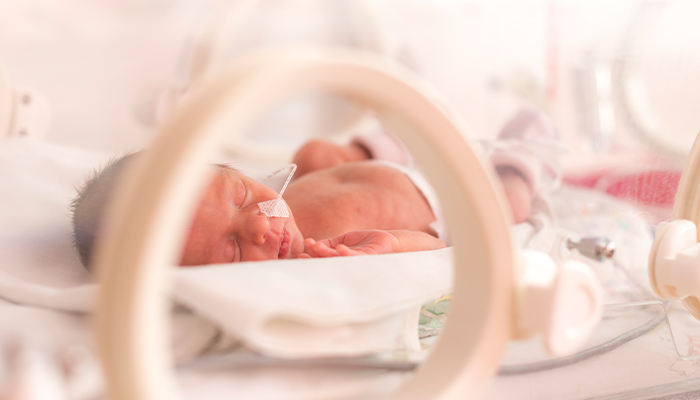HOW CAN WE HELP YOU? Call 1-800-TRY-CHOP
In This Section
Faculty Spotlight: Biological Variables in the NICU With Krithika Lingappan, MD

Editor's Note: Welcome to our monthly Faculty Spotlight series, in which we sit down with faculty members at Children's Hospital of Philadelphia Research Institute to learn more about their research and roles. Through these spotlights, our readers meet the diverse, dedicated, and distinctive individuals who lead our research community in our mission to improve children's health. It's a new round of spotlights, and this time, we're asking our featured scientists about how they encourage diversity, equity, and inclusion within their labs. In this Q&A, we meet Krithika Lingappan, MD, PhD, neonatologist in the Division of Neonatology at CHOP. Stay tuned for more from our Faculty Spotlight series throughout this year.
How long have you been at CHOP?

Krithika Lingappan, MD, PhD
I have been here since September 2021, and find that the environment at CHOP Research Institute is conducive for intellectual thinking and building new collaborations.
Can you tell us a little about your research specialty?
As a physician-scientist and neonatologist, I take care of premature babies in the neonatal intensive care unit. Preterm born females have always had an advantage in terms of mortality and major morbidities. The biological reasons behind this sex-specific difference are not known. Our lab has created a unique niche in investigating this in different organ systems. We have identified biological pathways and differences in cellular transcriptional states that could mediate these sex-specific responses.
Why did you choose to focus on that specialty?
When I was a trainee, we were taught that premature boys had odds stacked against them in the NICU. Even though this was accepted as an epidemiological truth, my colleagues and I decided to investigate the possible biological mechanisms that could explain these differences. Identification of biological pathways and cell populations that respond differently in the male and female neonatal lung may hold the key to the identification of therapies that can be tailored to the right patient. We also aim to increase awareness of sex as a crucial biological variable in neonatal translational and clinical studies through our work.
Can you tell us about a current or recent research project that you are excited about?
We recently emphasized the sex-specific differences in the neonatal lung and the heterogeneity in cellular responses using single-cell RNA sequencing. This work was selected by the American Physiological Society as the APS Select publication. We were also able to publish a commentary in the Journal of Pediatrics highlighting the critical need to address sex as a biological variable in neonatal clinical studies.
What are the long-term research questions you hope to answer?
Despite the compelling evidence for the role of biological sex in disease pathophysiology, fundamental questions remain about the mechanisms by which sex as a biological variable modulates lung injury, repair, and recovery, the contribution from sex chromosomes, cellular heterogeneity in sex-specific responses, and long-term cardiopulmonary sequelae related to preterm birth. We aim to extend our work in three directions: 1) the role of the sex chromosomes in mediating sex-specific differences in neonatal hyperoxic lung injury, 2) understanding heterogeneity of the sex-specific response in the developing lung at single-cell resolution, and 3) long-term cardiovascular sequelae related to preterm birth and role of sex as a biological variable. This fundamental work is necessary to identify sex-biased molecular forces that modify disease in the neonatal period and identify potential targets of novel therapies.
How do you support diversity, equity, and inclusion among your research team?
We aim to recruit a diverse team in our lab and it is reflected in our current lab recruits. We welcome research trainees from underrepresented minorities to the lab with the aim to foster their success. I am also part of the national Women in Neonatology (WiN) steering group under American Academy of Pediatrics, whose mission is to create a network of women in Neonatology to foster leadership and professional development, including research.